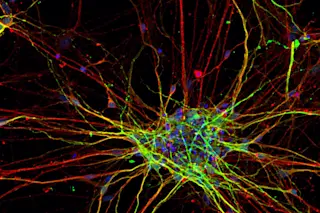Researchers announced this week that they may have helped illuminate another small piece of the puzzle that is autism spectrum disorder (ASD), a developmental disorder that can impact social communication and behavior.
In a paper published in the journal Nature Neuroscience, an international team of neuroscientists described a process that used participants’ skin cells to eventually grow neurons in petri dishes. Their observations of the neurons’ growth could help unravel some of the mysteries about early brain development in ASD.
The group, led by Fred Gage at the Salk Institute in La Jolla, California, collected skin cells from eight volunteers diagnosed with ASD and five non-diagnosed volunteers who acted as the control group. Then, using technology that was announced in 2006, the team rolled back the developmental clock. They converted those skin cells into what are called induced pluripotent stem cells, which have the power to mature into any type ...














